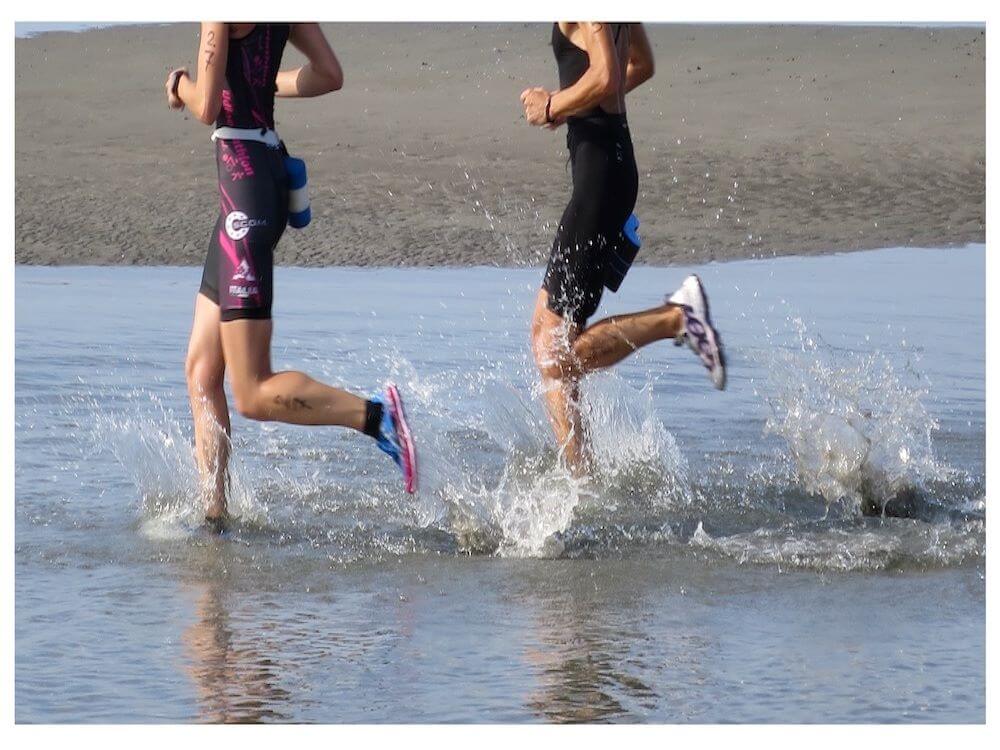The Benefits of Running for Swimmers

For many swimmers, running is likely not the most desirable form of land exercise. Outside of triathletes, most would rather spend hours in the pool than run for more than five minutes. Due to the COVID-19 pandemic, stay-at-home orders forced swimmers out of closed pools and gyms. With that, swimmers needed to seek out different forms of cardiovascular exercise, like running, to stay in shape.
Although swimmers are oftentimes less coordinated than their land-sport counterparts, they can still take advantage of running in the same way that dryland and core exercises help to improve swimmers’ athletic ability. As pools begin to reopen, running as a form of cross training should not be completely ignored.
A 2018 study that compared the hearts of elite swimmers and runners found differences in the left ventricle of each type of athlete. The left ventricle is responsible for twisting and pumping oxygenated blood to the body. The study found that left ventricle function was slightly better in the hearts of runners than swimmers, although both types of athletes had significantly adapted aerobic heart function. This finding suggests that running might improve swimmers’ ability to pump oxygenated blood to the body.
However, the researchers noted that swimmers’ hearts perhaps adapt to buoyancy in the water. Because swimmers float horizontally while swimming, the left ventricle is not required to work as hard to pump oxygenated blood. In runners, their standing position requires harder left ventricle pumping for blood to reach all extremities.
For swimmers, running may help to improve left ventricle function and increasing aerobic capacity. Running as a form of cross-training provides a challenging alternative for swimmers to exercise their cardiovascular system.
In addition to the cardiovascular benefits, running provides an outstanding leg workout. With gyms and lifting facilities also closed, a moderate run can activate and train leg muscles in place of lifting weights. As a bonus, running is very accessible. You can run almost anywhere and anytime, without relying on open pools and gyms.
A common misconception is that running must always be done at a fast pace to get faster. This strategy may work, but it is not optimal for longevity and injury-prevention.
Much like swimming, training for running should not be done at pace all of the time. For beginning runners, it is important to take it easy on yourself. When starting out, taking your pace nice and easy for a shorter distance will allow the body to adapt to an alternate form of cardiovascular exercise until endurance is formed.
In fact, one running training method involves running at a low heart rate in order to build up speed. It is commonly referred to as the Maffetone method. The goal is to run slower to first build a base, rather than going all out from the start. This means that by running a little bit slower for a longer distance, you still get faster. Plus, running at a lower intensity will reduce your risk of injury.
It is okay to slow it down. Do not be afraid to walk part of your run and enjoy the scenery. Especially for swimmers who are just beginning to run, enjoying the process of running will make you more likely to keep doing it. Like swimming, your running will get faster with time, consistency and enjoyment.
Running is a great alternative to swimming while pool space is limited. It also provides benefits that complement training for swimming. Using pool closures as a growth opportunity to become a better all-around athlete will be valuable when competition finally returns.




Ellisia Baxter